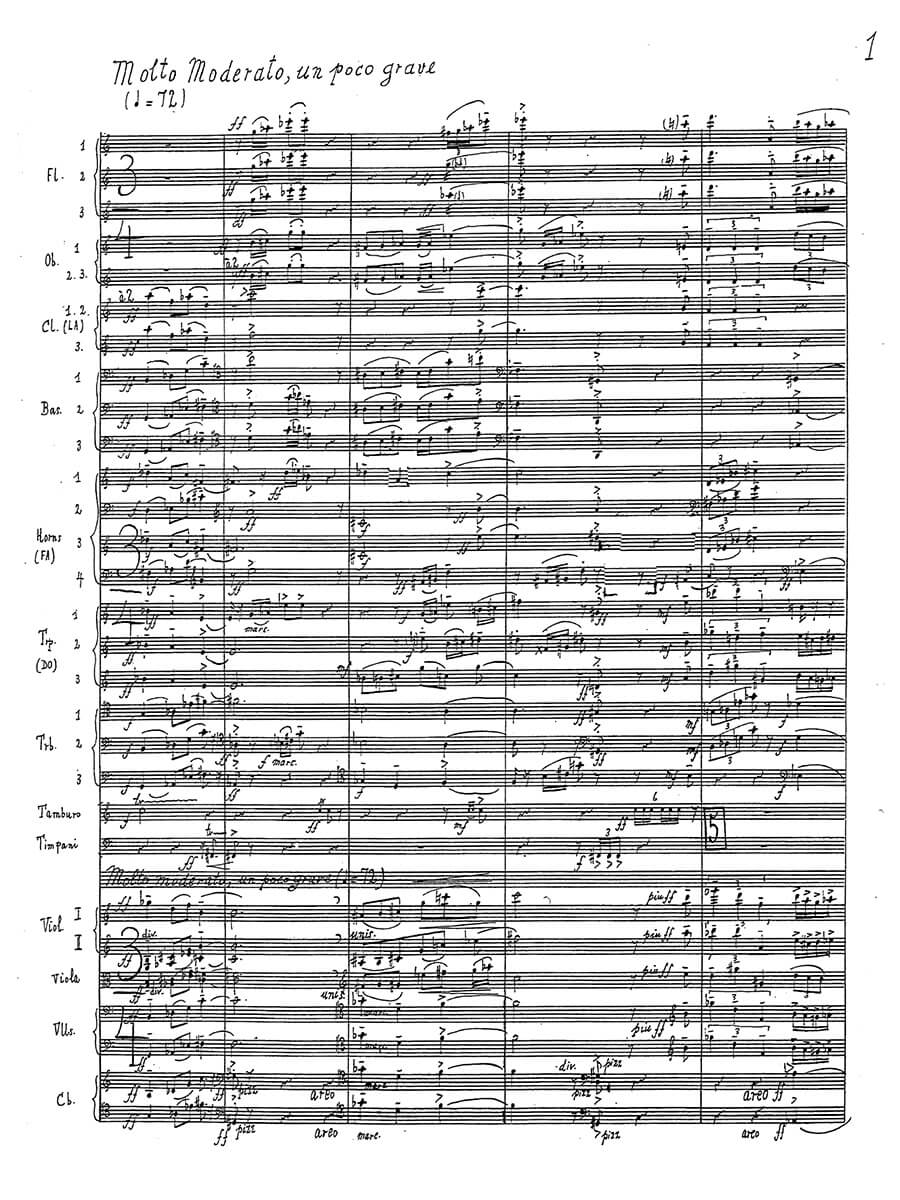Symphony No. 1
Schnabel, Artur
42,00 €
Preface
Artur Schnabel – Symphony No. 1
(b. Lipnik nr. Bielsko (Bielitz), Austria [today Poland], 17 April 1882 – d. Axenstein, Switzerland, 15 August 1951)
(1938-39)
I Molto moderato, un poco grave
II Vivace (p. 57)
III Largo, con devozione e solennità (p. 85)
IV Allegro molto e con brio (p. 107)
Preface
With the first reprint of the score of the First Symphony, Repertoire Explorer’s long-planned project to make all of Artur Schnabel’s mature orchestral works available in purchasable study editions has been completed. And thanks to the phenomenal efforts of the great violinist and conductor Paul Zukofsky, these four works (and others) can also be heard in top-class recordings – not only have they not yet found their way into concert life, mainly due to their horrendous difficulties, but no other commercial recordings exist to date. As with Eduard Erdmann, the fascination and fame of the epoch-making pianist have largely overshadowed Schnabel’s compositional output. From the mid-1910s, Schnabel was quickly and rightly regarded as a radically progressive composer. In retrospect, he can be seen as one of the most uncompromising, complex and free-minded composers of the first half of the twentieth century.
How was Schnabel’s music received by the experts of his time? A representative reaction comes from a sympathetically written review of Walter Schrenk (1893-1932), which appeared on 10 October 1929 in the Deutsche Allgemeine Zeitung: “That was a hard nut to crack, particularly for the public, which filled the Beethoven-Saal [Berlin] to the last seat on the concert evening given by the Kolisch Quartet with Artur Schnabel. Schnabel has never endeavoured to court popularity, either as a piano player or as a composer; he is one of the few men who make no concessions in any direction, and thereupon lies the unassailable position he occupies amidst today’s senseless concert activity. The composer Artur Schnabel is exceptional insofar as he does not appear to lend much credence to the public performance of his works; one seldom hears one of his pieces, although when one does, one has the impression of witnessing an important event. The premiere performance of the third string quartet composed in 1922 again divulged the power and uniqueness of a creative talent which only plays to itself, so to speak; which, contrary to every external effect, only seeks to shape inner visions musically. Such an ethical and deeply spiritual art would never wait upon broader appeal. […] An absolutely distinctive music lies in this quartet, a music full of fantasy and expressive power, a music with an intensity of emotion almost unparalleled in contemporary times. It is entirely immersed in itself; it travels paths which certainly not every person can follow, but it always remains music in the most beautiful sense of the word. Music of the heart and of the soul, which happily is far removed from the phantom of neue Sachlichkeit [new functionalism]. Its endlessly complex structure is only the result of developed and differentiated spiritual processes, which manifest themselves here in occasionally very strange but always imaginative sounds. The universal validity of this music is reduced thereby to a minimum — it is written only for the few.” …
Read full English preface / Das deutsche Vorwort komplett lesen > HERE
Score Data
| Edition | Repertoire Explorer |
|---|---|
| Genre | Orchestra |
| Pages | 190 |
| Size | 210 x 297 mm |
| Printing | Reprint |
